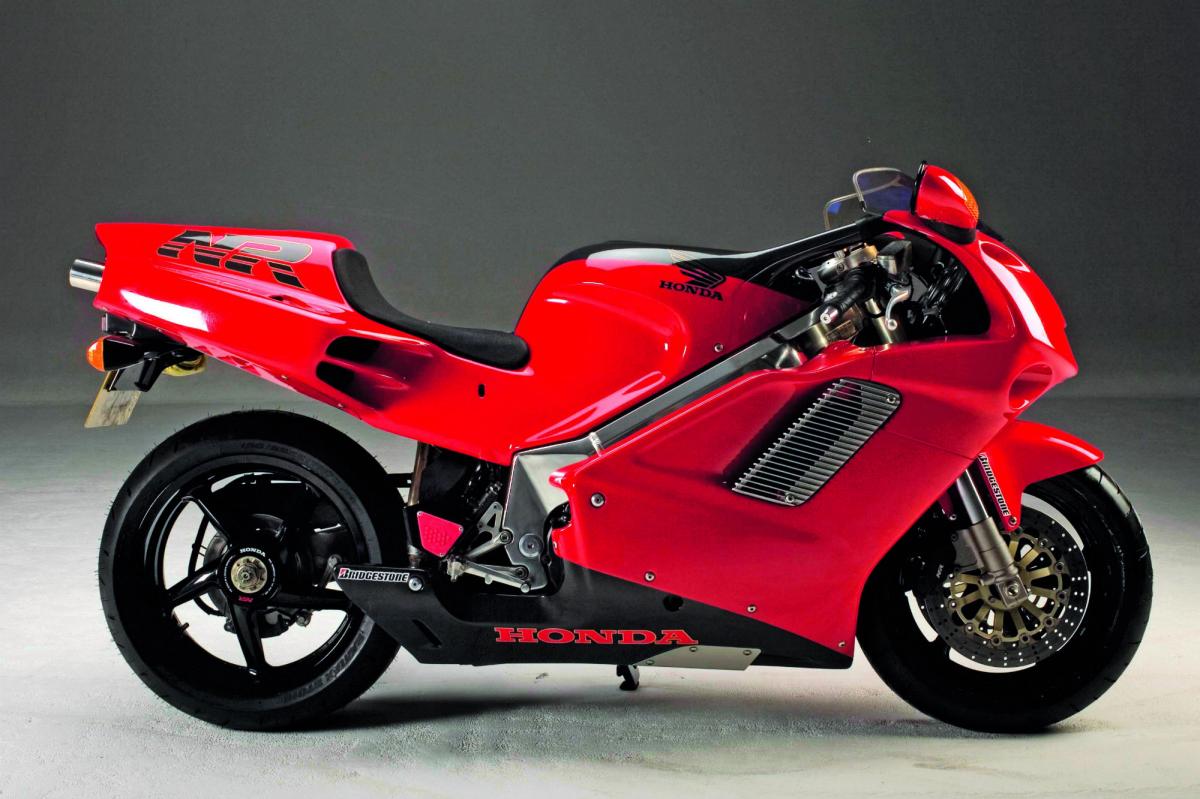Top 15 BEST Sportsbikes of All-Time... do you think we got it right?
This is it... the big one... we set out to decide and rank the 15 BEST Sportsbikes to have ever graced this earth. It wasn't easy... but we stand by our choices!

They are the dream, the poster on the wall, the motorcycles many aspire to own at some stage in their lives.
Sportsbikes are often the first thing everyone thinks of when a motorcycle in mentioned, the loud engines and even louder liveries earmarking many as iconic as they are in your face.
Naturally, there have been dozens of truly brilliant Sportsbikes over the decades, right back to the WWII era of Vincents, to the arrival on European shores of Honda in the 1960s, right into the 80s and the new era of fully-faired, four-pots.
In short, it is a mighty task to rank the very best sportsbikes to give you a winner we can crown as THE BEST ever made… but we did it anyway!
Though we DID have to increase it to 15 to avoid an argument…
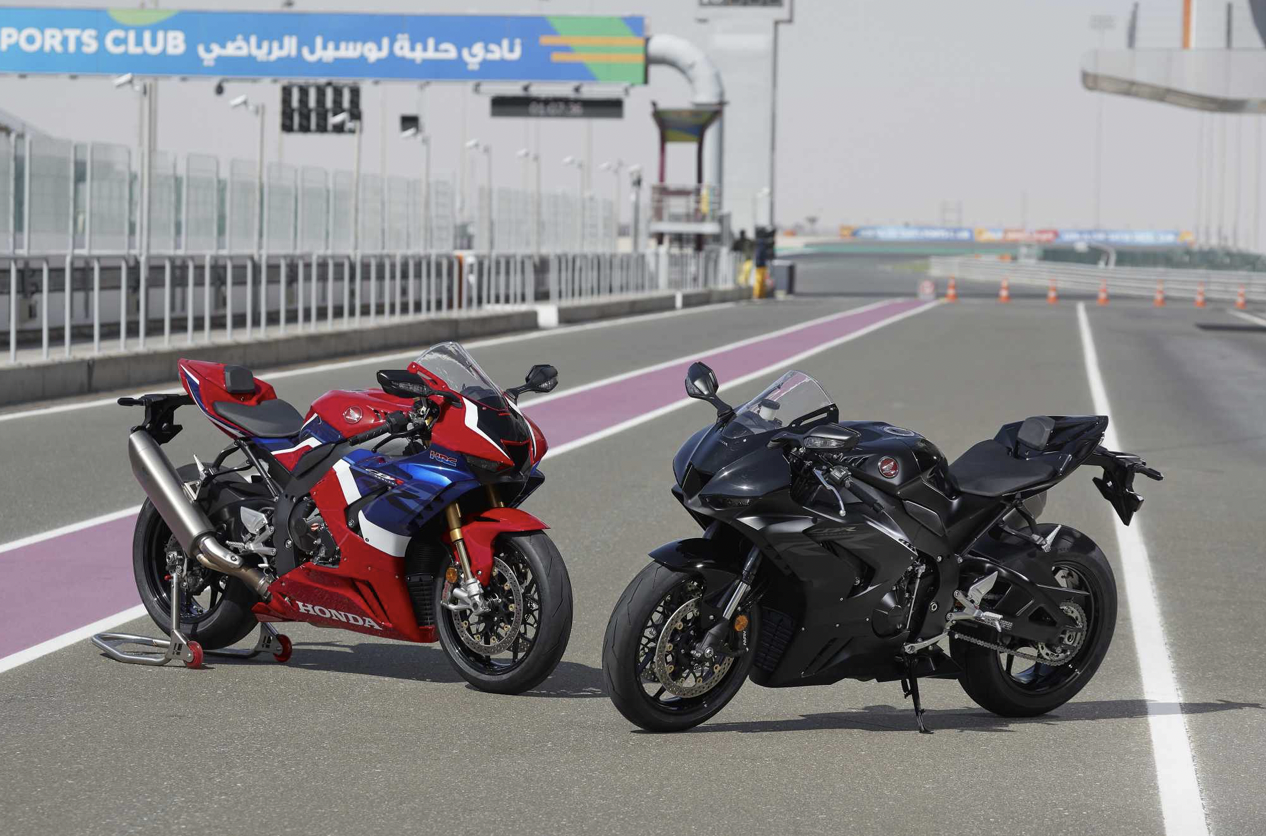
15. Honda CBR10000RR-R Fireblade [2020]
Let’s start with a newbie – not because it’s overtly the best or the ‘winningest’ (it’s still too early for that) or even a poster bike for a generation.
However, it is arguably the most complete version of the venerable and revolutionary Honda Fireblade yet and the first in a while that doesn’t play it so safe.
A motorcycle that has refined its qualities for reliability, quality, usability and engineering excellence, the RR-R amps up the power, tech and style for Mk.VII
Smaller, sharper, revvier, more powerful and more sophisticated, the latest version has been born out of MotoGP and is the most extreme Fireblade ever.
Creating a brilliant all-rounder that will leave a smile on your face whether you’re opening the throttle or popping down the shops.

14. BMW S 1000 RR [2010]
The sportsbike class may have been in decline in terms of numbers by the end of the 2000s first decade, but it did get a significant new entrant in BMW, who finally threw its hat into the ring with the S1000 RR.
It’s easy to forget now, over a decade after the S1000RR’s debut, how foreign the very idea of a BMW high-performance superbike was back in the Noughties. We knew it was coming – we just had no idea how game-changing the resultant S1000RR would be.
Simply, when unveiled at the Monza WorldSBK round in May 2009 (then unleashed on track shortly after), the all-new BMW was a game-changer, its 195bhp setting a new benchmark and its new breed of electronic rider aids including traction control representing the start of a new era for superbikes, though it was an odd looker.
The S1000RR may have never won WorldSBK – well, not yet anyway – but it reshaped the superbike class – forever.

13. Aprilia RSV4 Factory SE [2010]
A second game-changing European sportsbike in the space of as many years, Aprilia re-entered the sportsbike fray and set its sights on elusive WorldSBK title success with the RSV 4.
This time round, with the switch to V4 power (a full decade before Ducati themselves were forced to follow suit) in a compact, MotoGP-alike chassis not to mention the most sophisticated electronics sportsbikes had yet seen, Aprilia finally succeeded, winning the WorldSBK crown in 2010, 2012 (Max Biaggi) and 2014 (Sylvain Guintoli).
The more recent interpretation may have fallen behind once more and grown to 1100cc, so nullifying its race relevance, but for a long time the RSV 4 was the sportsbike king and ten years down the line remains a benchmark in dynamics and electronics.

12. Ducati 750 Super Sport [1973]
The bike that determined Ducati’s modern sporting DNA without which the 851, 916, 1098 and more would never have been created.
The Super Sport was effectively the road, production version of the desmo V-twin racer Paul Smart famously rode to victory at the 1972 Imola 200.
As such it was Ducati’s first production ‘L-twin’ with desmodromic valves (the preceding 750 GT and 750 Sport were both bevel-drive driven), while its fine handling chassis, disc brakes and replica bodywork including fairing in silver/green established the very idea of Ducati sports exotica.
It also happens to be the most collectable (and valuable) Ducati of all…
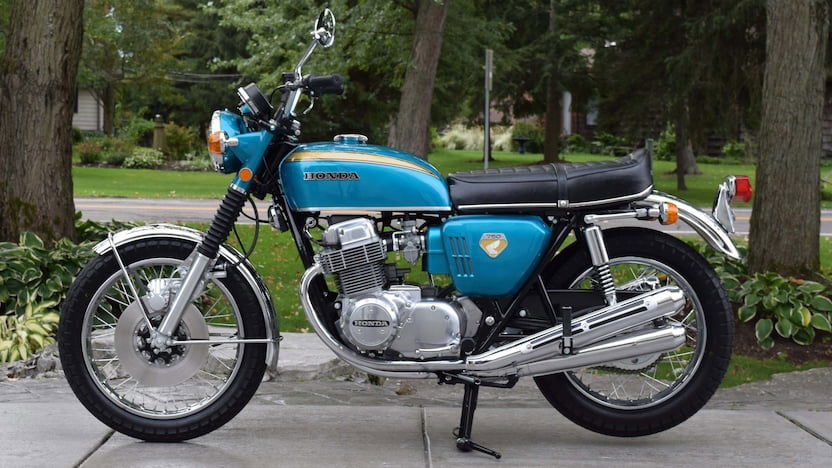
11. Honda CB750 [1969]
OK, in truth the CB was more tourer than sportster, revered mostly for its smooth torque and only achieved racing success in specialist CR750 racer form (most notably at the 1970 Daytona 200).
But the world’s first mass-production four-cylinder motorcycle also debuted disc brakes and today is lauded as the first ‘superbike’, so we couldn’t not include it here as the motorcycle that started it all.
Spawned from Honda’s multi-cylinder racing success, the CB was conceived to rival big British and American bikes in the US market with its 68bhp targeted to beat the 67bhp of Harley’s then 1200.
More significantly it was smooth, reliable and, at $1495 when launched, significantly cheaper than Triumph’s new Trident 750 triple, signalling the death knell for the British industry and paving the way for a new era of affordable, powerful Japanese multi-cylinder machines.
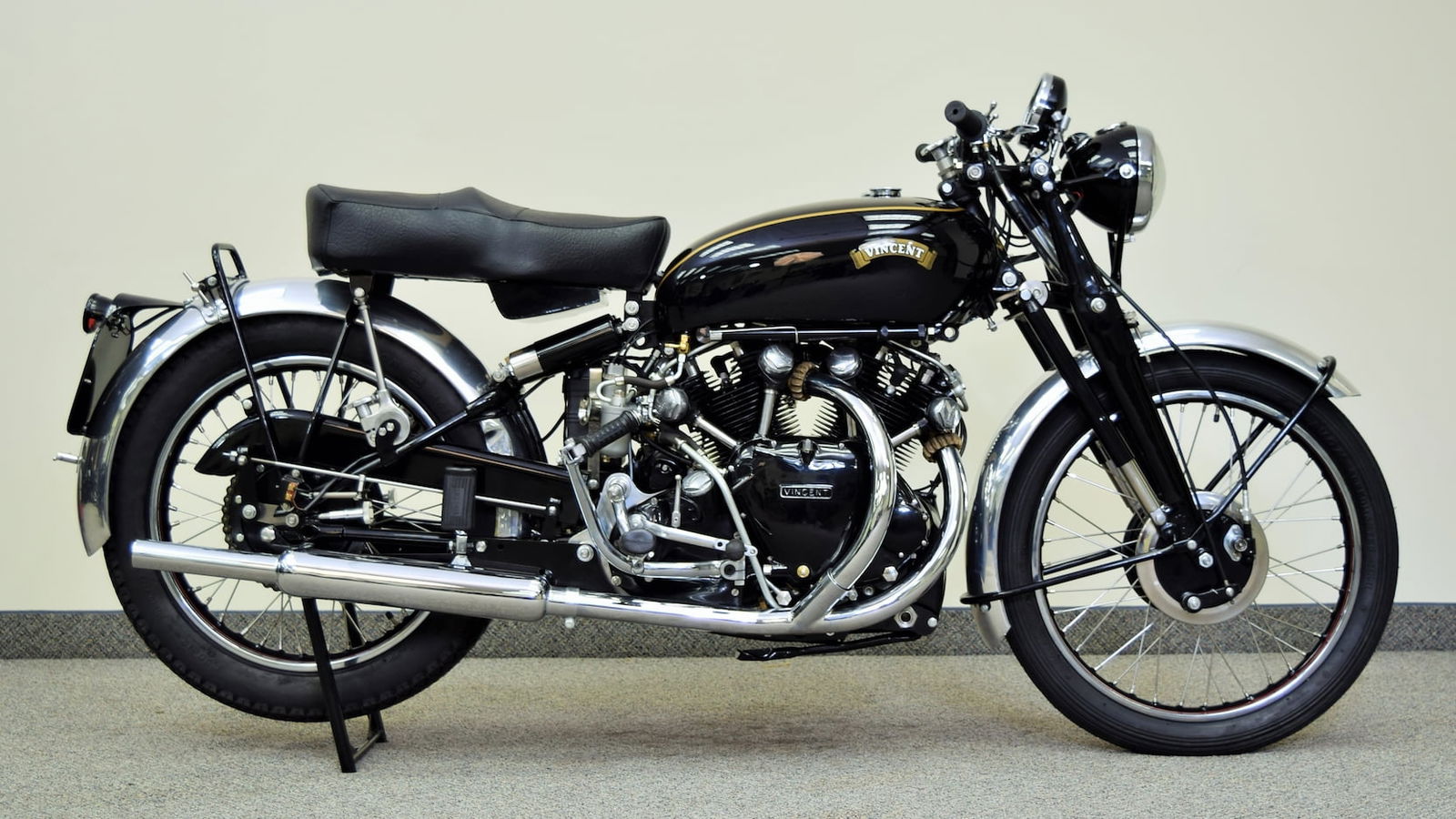
10. Vincent Black Shadow [1948]
The oldest bike here is included as it was unquestionably the equivalent ‘dream’ sporty bike of the post war era. In short, if the notion of a ‘sportsbike’ existed back then, this would be it.
The Stevenage firm’s glorious, hand-built 1000cc V-twins first debuted with the 45bhp Rapide before being up-specced to 55bhp and 125mph with the Black Shadow.
Unveiled at the 1948 Earls Court Show, reporters gushed, remarking: “It is a connoisseur’s machine: one with speed and acceleration far greater than any other standard motor cycle; and with unique and ingenious features which make it one of the outstanding designs of all time.”
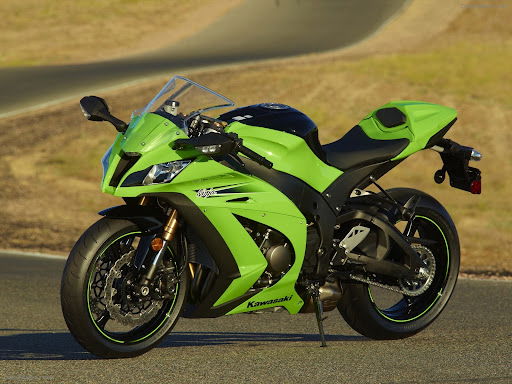
9. Kawasaki ZX-10R Ninja [2011]
The winner of six consecutive WorldSBK crowns with Jonathan Rea (and seven overall with Tom Sykes), the Kawasaki ZX-10R Ninja may not have been a wild revolution on the road but it flipped its minnow status on track to become an enduring dominant force. Given the millions ploughed into ensuring sportsbikes ‘win on Sunday, sell on Monday’, never has there been a more fitting example than the big Ninja.
Debuting with the 2004 ZX-10R and riding a roller coaster of configurations in the years thereafter, the big Ninja found its mojo in 2010 in super-powerful, 197bhp, rev-happy and electronics-laden form, enough to re-take BMW’s S1000RR.
Just as important in the big Ninja’s success has been its constant, sometimes subtle evolution since, most significantly in 2016 and now again for 2021.
The big Kawasaki may have credible, successful rivals, most notably Yamaha’s R and Honda Fireblade, but if you want a proven Japanese sports bike winner on track, this is the one.

8. Yamaha FZR1000R Genesis/EXUP [1987]
After Kawasaki set the ball rolling for fine-handling sports bikes with the integrated design of its GPZ900R Ninja in 1983 then Suzuki introduced the lightweight, no compromise ‘race replica’ with its first GSX-R750 in 1985, Japanese rivals Yamaha were the next Japanese brand to truly move sports bikes forward with its FZR1000R ‘Genesis’ of 1987.
The first Japanese sports bike to be designed as a ‘whole’ rather than a chassis being designed around an engine, the Genesis introduced mass production aluminium twin spar frames, Yamaha calling theirs ‘Deltabox’, which thereafter became the norm on large superbikes.
They also powered it with a compact, 135bhp, 989cc five-valve four, gave it decent suspension and brakes and dressed it all in sporty, fully-faired, twin headlamp bodywork evolved from that of the GSX-R.
The result was a new benchmark in all-round sporting brilliance and was further enhanced by Yamaha’s updated EXUP version in 1989 with exhaust valves, 145bhp, fatter 17inch rubber and even slicker styling.
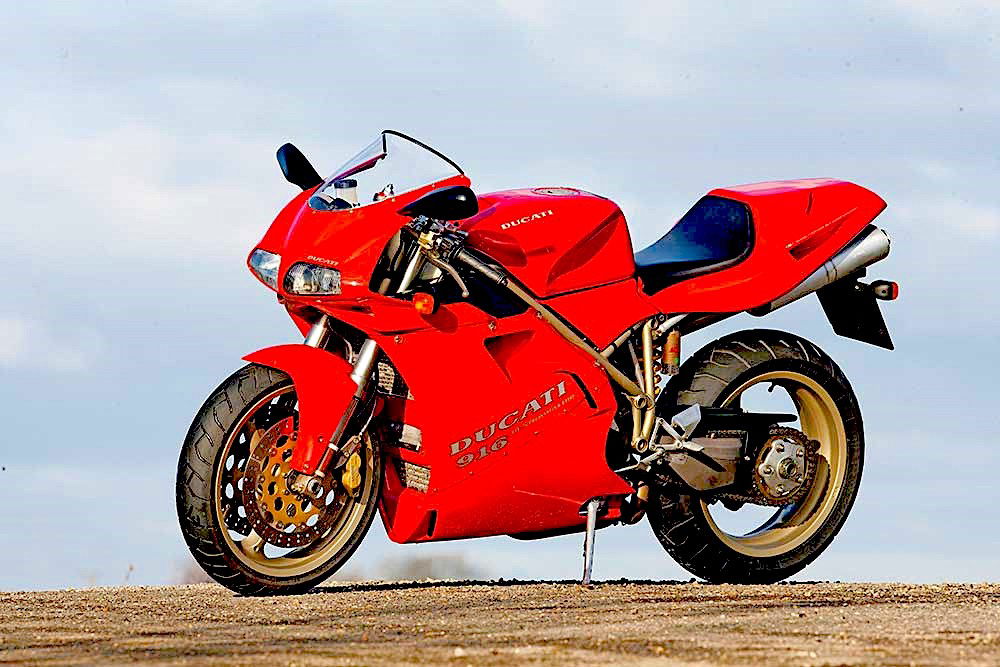
7. Ducati 916 [1994]
Yes, of course Ducati’s iconic 916 is in here, it had to be… but not, perhaps, placed as high as you might have expected it to be.
After the doldrums of the 1980s, Ducati first returned to sports bike supremacy with the brilliant liquid-cooled, four-valve, ‘Desmoquattro’ 851 of 1987, which was good enough to win the WSB title from 1990 to 1992. Then, with the 916,
Ducati achieved true dominance – not just on the track but as an object of desire.
Designed by Massimo Tamburini, the 916 wasn’t just effective and fast (winning SIX WSB crowns, most famously with four for Brit Carl Fogarty), its striking styling became a poster staple and features such as its underseat exhausts and single-sided swing arm became true trendsetters (even if they were copied from Honda’s NR750).
The 916 also restored Ducati as king of the European superbike builders, a status the Italian brand has retained to this day.
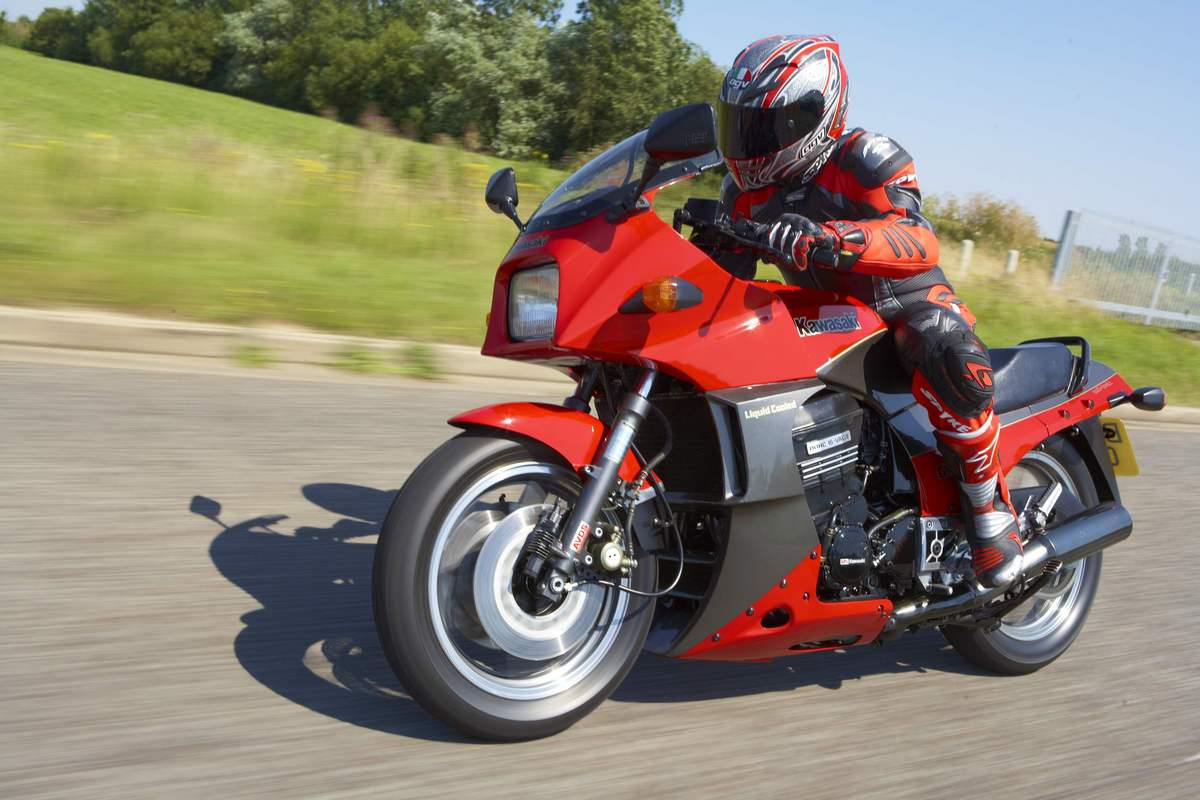
6. Kawasaki GPz900R Ninja [1983]
With hindsight, the Ninja 900 is maybe more of a sports tourer than a pure sportsbike (although, at the time, it was as extreme as Japanese bikes got).
It was, also, TT aside, no race winner, mostly due to not fitting in with the then 750cc rules. But the GPz900R is still every bit as deserving as others to be included here.
Conceived as the all-new successor to the Z1 900, the GPz900R was just as significant, setting the sports bike template for a liquid-cooled, DOHC, 16v four that lives on today.
A full seven years in development, the new ‘Ninja’ not only set a new standard for high revving performance (its 908cc producing 115bhp and capable of 150mph) but also for integrated, fine-handling design. Its spine frame was strong and stable, its short, compact design delivered sharp steering and sweet handling and its standard full fairing was effective.
Superbike design had moved on a generation in one fell swoop. The GPz swept the board at the 1984 Production TT and the big Kawasaki remained in production a full 19 years…
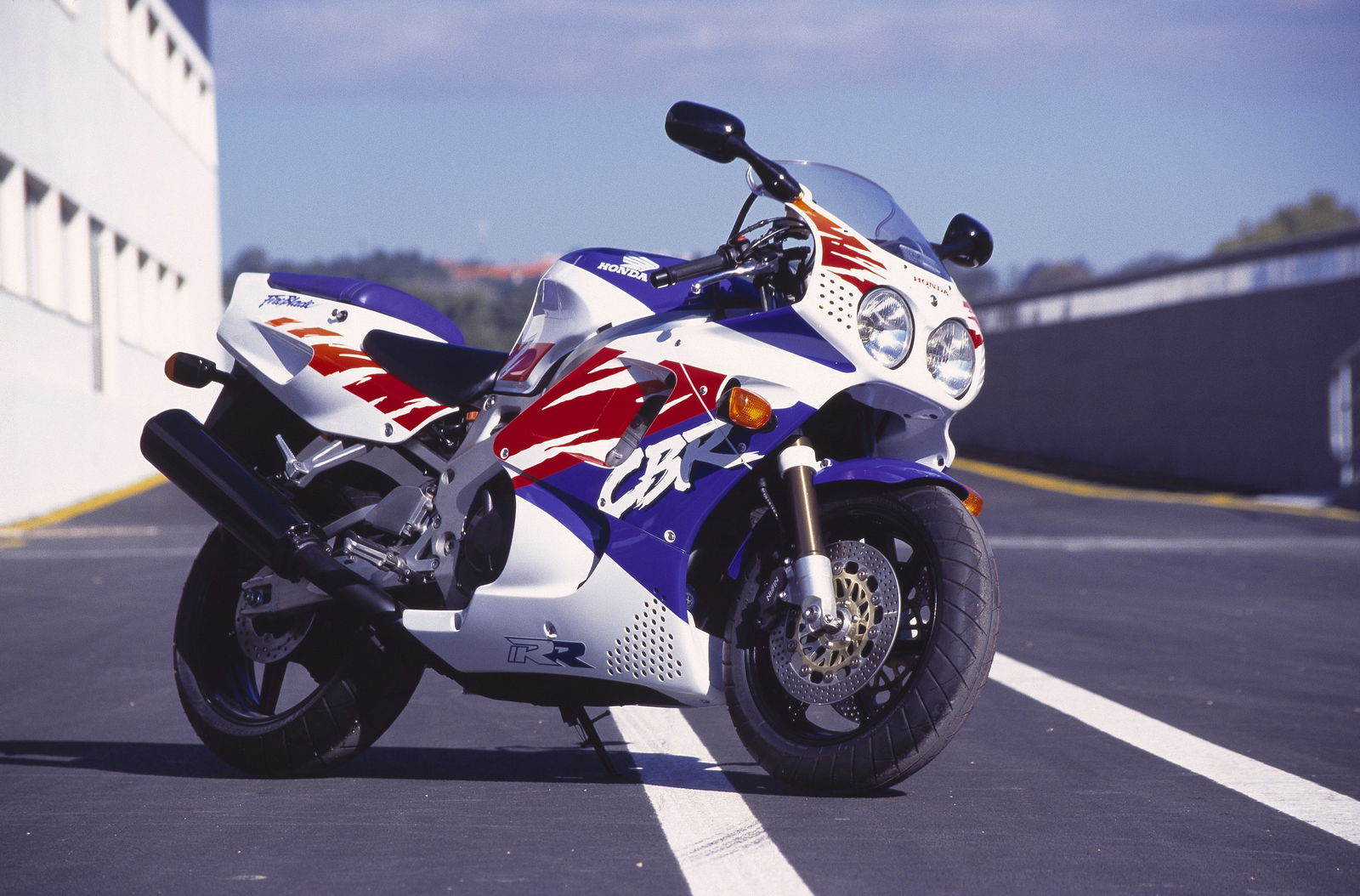
5. Honda CBR900RR Fireblade [1992]
People forget that, between, say, 1983 and 1993, RC30 aside, Honda wasn’t particularly known for its big sports bikes.
Its VFR750 was a sports tourer, its CBR1000F an overweight blancmange and if you wanted something 1000cc and sporty you had to look to Yamaha or Suzuki instead.
That all changed with the revolutionary first Fireblade, the CBR900RR. Originally conceived as a 750 then expanded, while its driving mantra was to be ultra light and compact – or, in the jargon of the day, ‘to have the performance of a 1000 but in a 600cc package’.
The result was simply a revelation. At 205kg wet the ‘Blade was a massive 34kg lighter than Yamaha’s then FZR1000. With a wheelbase of just 1405mm it was stumpy and sharp and its all-round performance was simply ballistic.
The first Fireblade was also so advanced it took all rivals – most notably Yamaha with its R1 – a full five years to catch up.
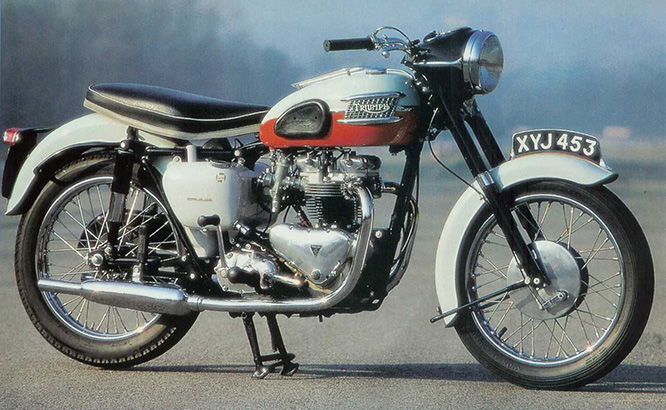
4. Triumph Bonneville T120 [1959]
Today’s version may be a slightly pedestrian retro roadster so it’s easy to forget that the original Triumph Bonneville was a game-changing sportsbike.
Initially conceived as a limited edition, performance, twin carb version of Triumph’s then 650cc Tiger T110, the first Bonneville was named in honour of Johnny Allen’s unratified land speed records set aboard a twin Triumph Thunderbird engine streamliner at the Bonneville Salt Flats in 1955 and 1956.
Famously Edwards Turner’s last production design at Triumph, the original ‘Bonnie’ actually wasn’t a huge success. But with modified styling, an advertising campaign as ‘the best motorcycle in the world’ and 1963 improvements to unit construction it soon became established as THE performance motorcycle of the early 1960s
Selling almost 30,000 Bonneville’s a year at one stage, it was overtaken by Honda’s CB750 years later in 1969. Today, it remains an icon of design and culture.
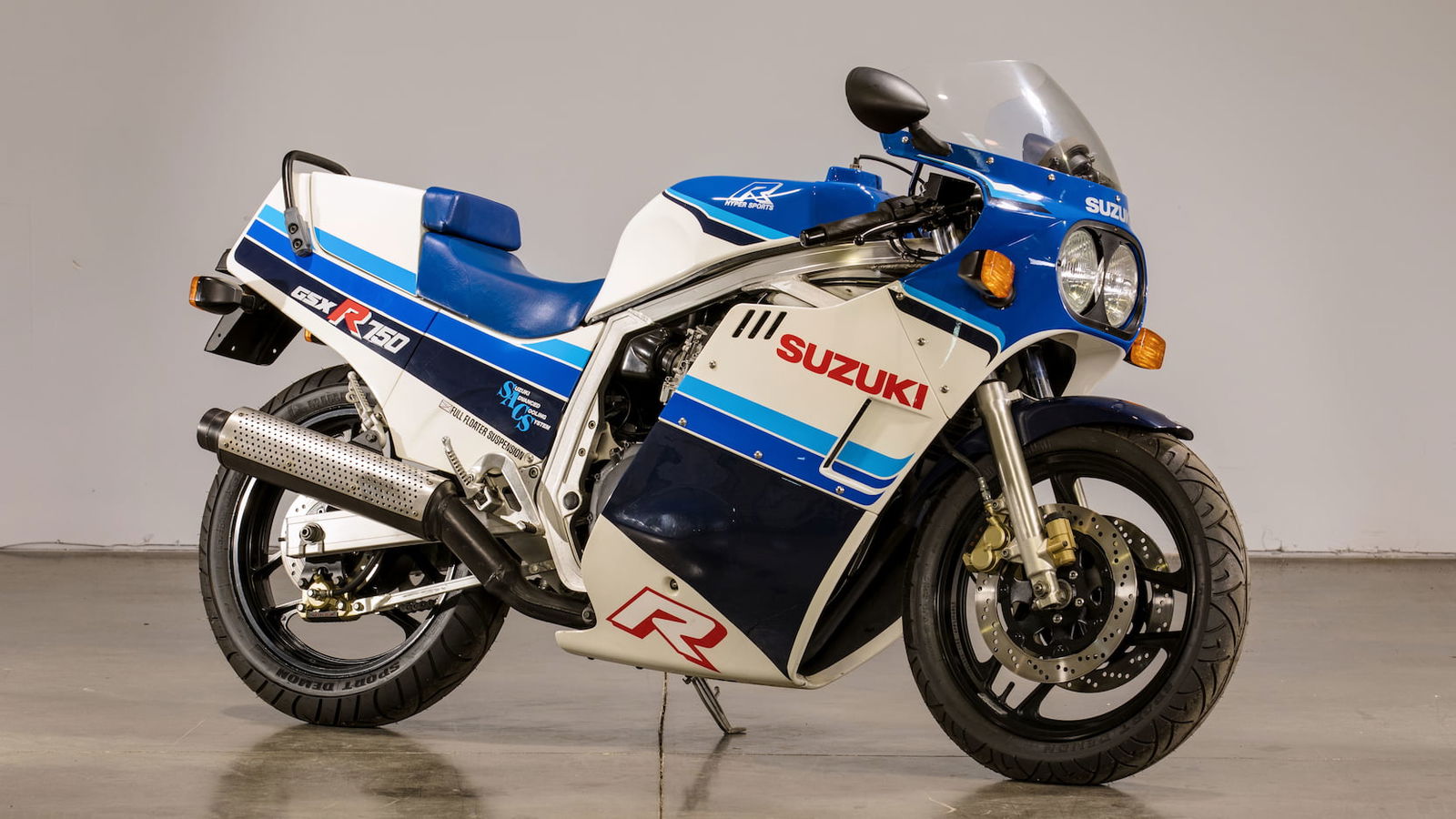
3. Suzuki GSX-R750 [1985]
Commonly considered the first ‘racer replica’, the first Suzuki GSX-R was also a sports bikes ‘name-game-changer’ by being conceived to be a racing ‘R’ version of its four-valve GSX four-stroke four.
Inspired by Suzuki’s 1983 endurance world championship winning XR41 racer, the successor to the steel framed, twin shock XR69 had a much lighter aluminium box-section frame and monoshock rear.
The road GSX-R replicated that lightweight ethos with a similar alloy frame, monoshock rear, high-revving, all-new 100bhp oil-cooled engine and twin beam, fully-faired racer styling that was the spit of the XR41.
On the street the GSX-R was sensational but on track as a production racer it was better still, winning straight out of the box and inspiring a whole new genre of ‘replica-racer’ sports bikes.
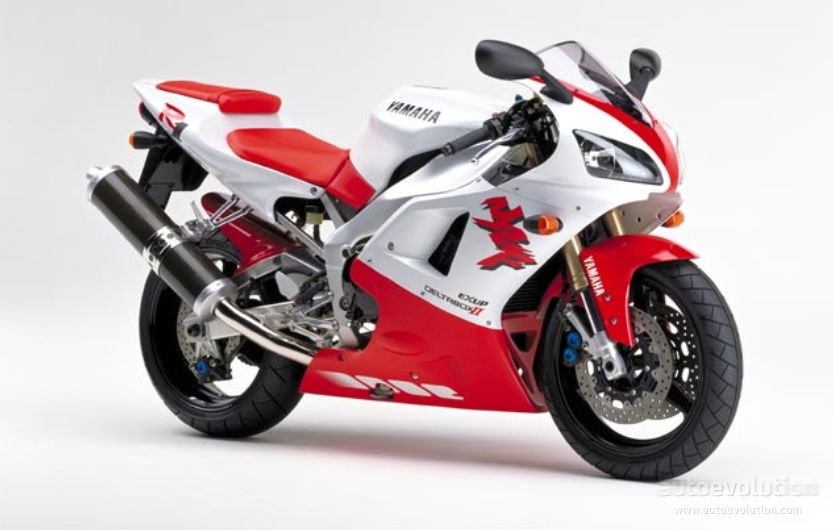
2. Yamaha YZF-R1 [1998]
After the game-changing 1992 Fireblade it took Honda’s Japanese rivals years to catch up but, boy, when they did they came back with a bang.
Yamaha first bided their time with the 1993 YZF750R, which had genuine merit, then the 1996 YZF1000R ThunderAce, which had less so. But when Yamaha unveiled the YZF-R1 for 1998 in Milan by no less than Scott Russell in a silver space suit, it did so with the accompaniment of just two numbers: 150bhp and 177kg – both of which blew all comers away.
Clever tech such as a stacked gearbox enabled a short engine in turn allowing a longer swingarm for nimble steering but also stability.
The R1 was also ballistically fast and spawned a whole new family of Yamaha ‘R’ sports machines.
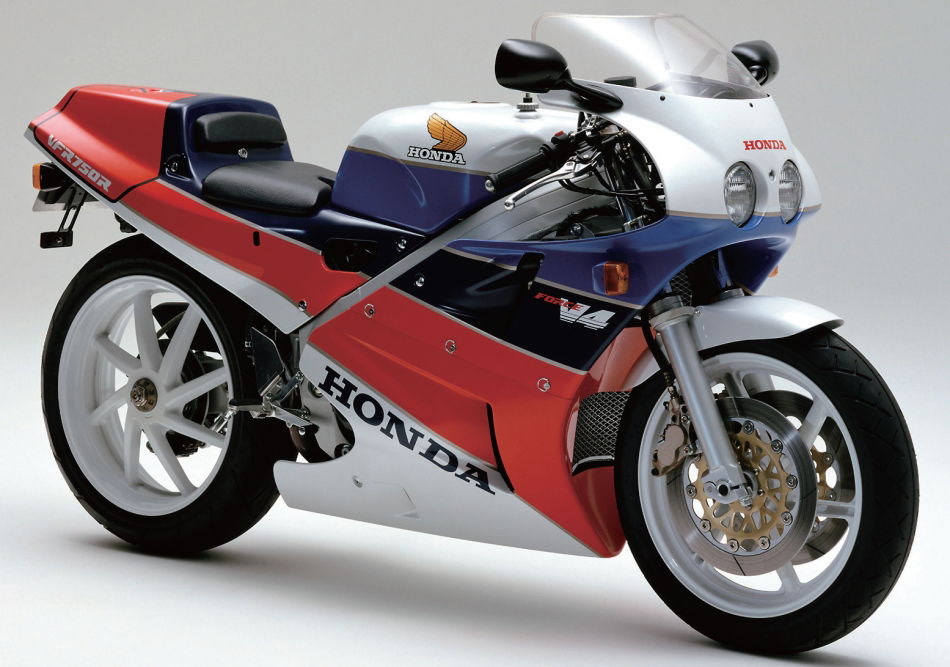
1. Honda RC30 - Honda VFR750R [1988]
No production sports motorcycle has made as bigger impact as Honda’s sublime RC30.
Effectively a racer with lights, Honda’s newcomer was created purely to win on track and was sparked by both the creation of the new WorldSBK production-based series and a change in regulations to a similar production formula for world endurance.
To qualify, machines required a minimum production run depending on the size of the company. The RC30, designed and hand built by Honda’s racing arm, HRC, was Honda’s entry – and blew everyone away in WorldSBK, endurance, F1, the TT and more.
Its bespoke, geared-cam V4 produced a fast, but equally important, flexible 118bhp; its twin beam chassis handled beautifully; it was light and compact and it was durable and beautifully made – so what if it cost getting on for twice as much as an average Japanese road sportster… it was doubly as good
All of that added up to a new ‘ultimate’ in terms of Japanese sports bikes, a status the RC30 has largely retained to this day.

